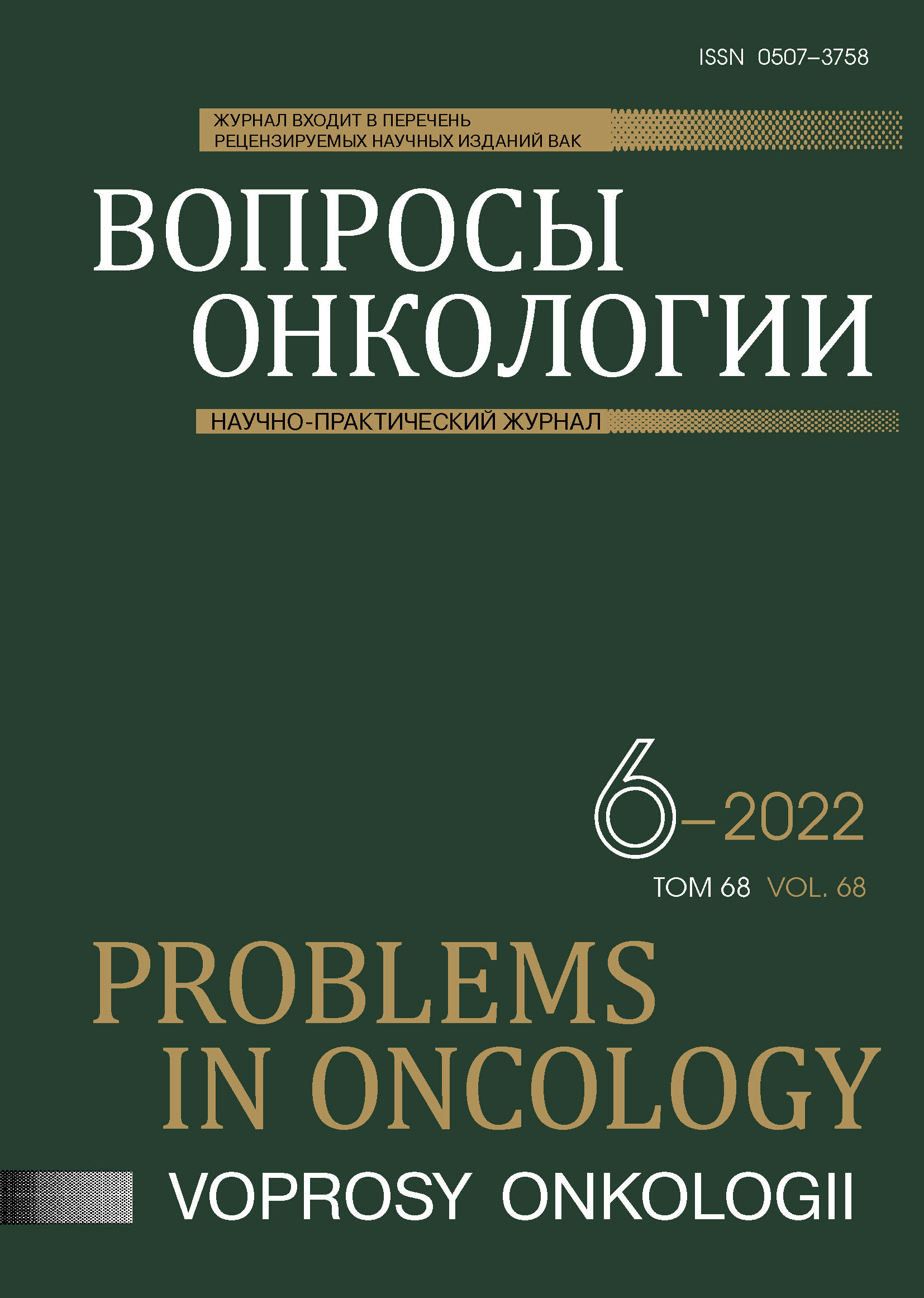Abstract
Introduction. Basal cell carcinoma is the most common malignant neoplasm of skin. The treatment of a patient is aimed at radical removal of the tumor. The use of a CO2-laser can be an alternative method of treatment in situations where other treatments are impossible or unavailable.
Aim. To evaluate the efficacy and the cosmetic outcome after treatment of patients with various clinical subtypes of basal cell skin cancer with the use of superpulsed CO2-laser.
Materials and methods. The retrospective study included 40 patients with 56 lesions of histologically confirmed basal cell skin cancer treated with a CO2-laser in the Scientific Center of Dermatovenereology and Cosmetology since 2018 to 2020.
Results. Out of 56 lesions of basal cell skin cancer, 33 (59%) were clinically, dermatoscopically and pathomorphologically classified as superficial, and 23 (41%) as nodular one. Of the 56 lesions, 50 lesions (89.2%) were healed within one session, and only six lesions (10.8%) showed recurrences. Excellent and satisfactory cosmetic results of treatment were seen in 86% of cases. The best cosmetic result was observed with the use of laser destruction of basal cell skin cancer lesions localized on the face and having a size of up to 5 mm (p=0,015).
Conclusion. Application of CO2-laser destruction is a valid method for the treatment of basal cell skin cancer patients, including those with multiple foci below 2 cm in diameter, of superficial and nodular histological subtypes, which demonstrated satisfactory cosmetic outcome.
References
Сайтбурханов Р.Р., Кубанов А.А., Кондрахина И.Н., Плахова К.И. Современное представление о патогенезе базальноклеточного рака кожи // Вестник дерматологии и венерологии. 2021;97(5):38–51. doi:10.25208/vdv1277 [Saitburkhanov RR, Kubanov AA, Kondrakhina IN, Plakhova KI. Modern understanding of the pathogenesis of basal cell skin cancer. Bulletin of Dermatology and Venereology. 2021;97(5):38–51 (In Russ.)]. doi:10.25208/vdv1277
Bichakjian CK, Olencki T, Aasi SZ et al. (2016). Basal Cell Skin Cancer, Version 1.2016, NCCN Clinical Practice Guidelines in Oncology // Journal of the National Comprehensive Cancer Network: JNCCN. 2016;14(5):574–597. https://doi.org/10.6004/jnccn.2016.0065
Zaorsky NG, Lee CT, Zhang E et al. Hypofractionated radiation therapy for basal and squamous cell skin cancer: A meta-analysis // Radiotherapy and oncology: journal of the European Society for Therapeutic Radiology and Oncology. 2017;125(1):13–20. https://doi.org/10.1016/j.radonc.2017.08.011
Fournier S, Laroche A, Leblanc M et al. Prospective Clinical Trial Comparing Curettage and Cryosurgery to Curettage and Electrodesiccation in the Management of Minimally Invasive Basal and Squamous Cell Carcinomas // Journal of cutaneous medicine and surgery. 2020;24(6):596–600. https://doi.org/10.1177/1203475420943258
Buckley D, Marczuk C, Kennedy T. Cryosurgery for basal cell carcinoma treated in primary care // Irish journal of medical science. 2020;189(4):1183–1187. https://doi.org/10.1007/s11845-020-02188-5
Filonenko E, Kaprin A, Urlova A et al. Topical 5-aminolevulinic acid-mediated photodynamic therapy for basal cell carcinoma // Photodiagnosis and photodynamic therapy. 2020;30, 101644. https://doi.org/10.1016/j.pdpdt.2019.101644
Hibler BP, Sierra H, Cordova M et al. Carbon dioxide laser ablation of basal cell carcinoma with visual guidance by reflectance confocal microscopy: a proof-of-principle pilot study // The British journa lof dermatology. 2016;174(6):1359–1364. https://doi.org/10.1111/bjd.14414
Kavoussi H, Ebrahimi A. Treatment and cosmetic outcome of superpulsed CO2 laser for basal cell carcinoma // Acta dermatovenerologica Alpina, Pannonica, et Adriatica. 2013;22(3), 57–61. https://doi.org/10.2478/v10162-012-0035-y
Wheeland R.G, Bailin P.L, Ratz J.L, Roenigk R.K. Carbon dioxide laser vaporization and curettage in the treatment of large or multiple superficial basal cell carcinomas // The Journal of dermatologic surgery and oncology. 1987;13(2):119–125. https://doi.org/10.1111/j.1524-4725.1987.tb00509.x
Humphreys TR, Malhotra R, Scharf MJ et al. Treatment of superficial basal cell carcinoma and squamous cell carcinoma in situ with a high-energy pulsed carbon dioxide laser // Archivesofdermatology. 1998;134(10):1247–1252. https://doi.org/10.1001/archderm.134.10.1247
Власов А.В., Родионов В.В., Филиппов С.Г. Лечение рака кожи головы и шеи в амбулаторной практике ГУЗ «Областной клинический онкологический диспансер» г. Ульяновска // Ульяновский медико-биологический журнал. 2015(1):109–112 [Vlasov AV, Rodionov VV, Filippov SG. Treatment of scalp and neck cancer in outpatient practice of the Regional Clinical Oncology Dispensary of Ulyanovsk // Ulyanovsk Medical and Biological Journal. 2015(1):109–112 (In Russ.)].
Волгин В.Н., Странадко Е.Ф., Тришкина О.В. и др. Сравнительная характеристика различных видов лечения базальноклеточного рака кожи // Российский журнал кожных и венерических болезней. 2013;(5):4–10 [Volgin VN, Stranadko EF, Trishkina OV et al. Comparative characteristics of various types of treatment of basal cell skin cancer // Russian Journal of Skin and Venereal Diseases. 2013;(5):4–10 (In Russ.)].
Limandjaja GC, Niessen FB, Scheper RJ, Gibbs S. The Keloid Disorder: Heterogeneity, Histopathology, Mechanisms and Models // Frontiers in cell and developmental biology. 2020;8:360. https://doi.org/10.3389/fcell.2020.0036

This work is licensed under a Creative Commons Attribution-NonCommercial-NoDerivatives 4.0 International License.
© АННМО «Вопросы онкологии», Copyright (c) 2022
